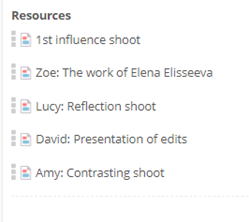February 2021 BLOG
In this month’s teaching and learning blog, we are going to focus on the world of differentiation and how we can use blended learning tools to assist in preparing resources to use inside and outside of the classroom to support all learners. Adam, Natalie, and I have been looking at some of our colleague's course plans to bring you some excellent examples that exemplify best practice. Thank you to all those teachers who have agreed to us using their plans and if you would like to speak to them please do as they are all willing to support you with the development of your own plans.
The first area we want to share with you was supporting students who need guidance on their extended writing skills. Prior to lockdown last year we were working hard on this aspect of student learning using the ‘The Writing Revolution’ and ‘Closing the Vocab gap’ to guide us. Since the lockdown, some staff have continued to apply the techniques we were previously developing, and I want to share some of those examples in this blog.
The first is the ‘Single Paragraph Outline’ which has been used by many teachers to support students write a paragraph. Chris Watson uses an SPO to support his students with a 6-mark question which students use to plan and then write an exam-style answer. This certainly helps students plan what is required, allows Chris to check they understand the key points before they go off and write their extended answer.
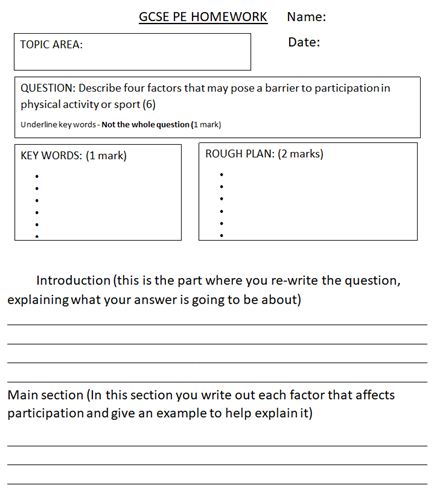
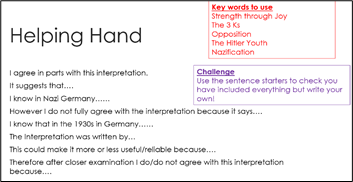 Vicci Masson has developed sentence starters to support students when they are struggling to start their writing. These are often on PowerPoints or help sheets to give students confidence in starting an extended piece of writing.
Vicci Masson has developed sentence starters to support students when they are struggling to start their writing. These are often on PowerPoints or help sheets to give students confidence in starting an extended piece of writing.
Barbara and the Geography team have utilised the concept of 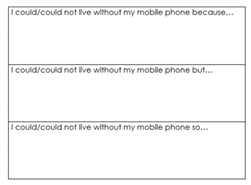 developing conjunctions with a particular focus on the use of ‘Because, But and So’. This is a great illustration of how an exercise that seems simple can actually require students to think analytically. It certainly enables students to engage with in depth and focused thinking in a more productive way than just asking them to respond to open-ended question.
developing conjunctions with a particular focus on the use of ‘Because, But and So’. This is a great illustration of how an exercise that seems simple can actually require students to think analytically. It certainly enables students to engage with in depth and focused thinking in a more productive way than just asking them to respond to open-ended question.
There are also ‘Mindmaps’ and ‘Knowledge Organisers’ that are being used frequently on itslearning that really support students who struggle to organise their thoughts. These really help students order their thoughts and help with the planning of an extended piece of writing or essay. English have done some fabulous examples recently which are shown below.
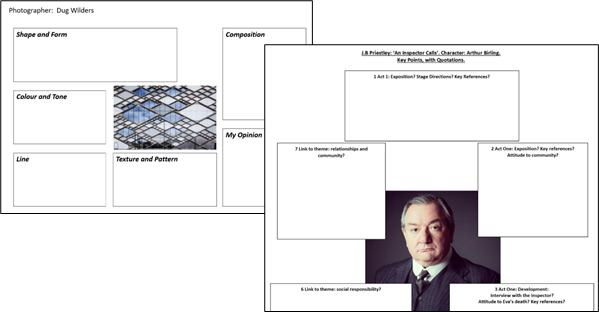
In these examples above, one of the key things you can do to support students is to model what a good piece of work looks like. Modelling is an instructional strategy in which the teacher demonstrates a new concept or approach to learning and students learn by observing and making learning notes. A good way we have seen recently is when teachers first model the task for students (using a narrated PowerPoint, visualiser, or instructional video), and then students begin the task and work through the task at their own pace. Students appreciate it when the staff encourage them to pause the video at certain points so they can complete the tasks set.
One of the key areas we must continue to develop is our extension and enrichment provision for all our students. An extension task requires the student to engage in further in-depth thinking around the learning targets in that particular lesson and must be evident in our teaching plans. This is often evident, but we must be more specific with these tasks, allowing all students to attempt it but also targeting certain students to complete the extension because we are making clear our expectations of how they should challenge themselves in their learning. All students who attempt the extension work should be recognised and rewarded.


Enrichment activities are voluntary fun-based activities, which help students to become more engaged in their learning and thereby possibly extend their knowledge related to various aspects of the curriculum. Enrichment activities are typically interactive, and project-focused, and challenge students to use old concepts in new ways while bringing new concepts to light. The Challenge Award is a good example of this and covers most areas of the curriculum however we would like to see every course page have some enrichment activities that help our students get that love of learning in your subject.
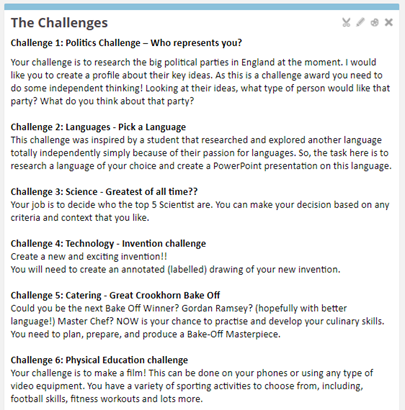
Feedback and assessment are more tools we can use in the provision of differentiation for our students. Effective feedback should be formative and actionable. Formative feedback is specific and sheds light on the next steps towards achieving a learning goal. Therefore, good formative feedback is also actionable, as students can develop a plan for closing the gap between where they are now and where they need to be in terms of learning. Differentiation then occurs as each student, guided by effective feedback can revisit and revise a piece of work to improve the specific areas a teacher has directed them to focus on. Written, audio and video feedback have all been used successfully with examples below. Another key point of effective feedback is that it leads to students actually responding to their teachers' comments by improving their work, which makes the time and effort the teacher has put in worth it!
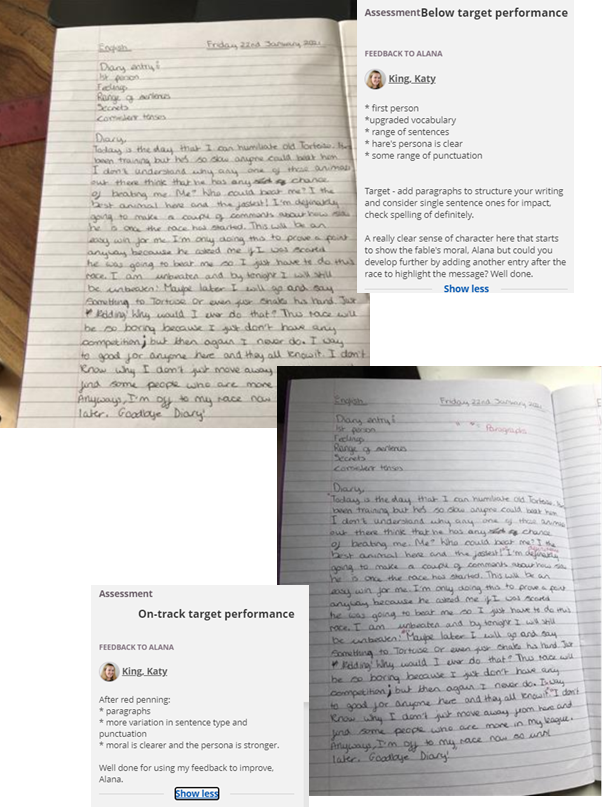
‘itslearning’ allows us to plan and prepare for differentiation in a  number of ways. When talking to our students, the thing they say over and over is that they prefer the plans that are clearly laid out (bullet points/numbered activities) and ones that are ‘chunked up’ into small pieces of work. This is especially true for our low attaining students who have not got the resilience to go through long written instructions.
number of ways. When talking to our students, the thing they say over and over is that they prefer the plans that are clearly laid out (bullet points/numbered activities) and ones that are ‘chunked up’ into small pieces of work. This is especially true for our low attaining students who have not got the resilience to go through long written instructions.
The example to the right is a great example of how to set up the plans to allow all students to access the work. The links the teacher has embedded into the plans allow students to press the button which takes them through to exactly the right area, such as the assignment link.
In photography, Adam has set up the permissions, which means the teacher has targeted certain students with a particular assignment that will support them with their learning. This is a great way to target learning effectively to key individuals.
